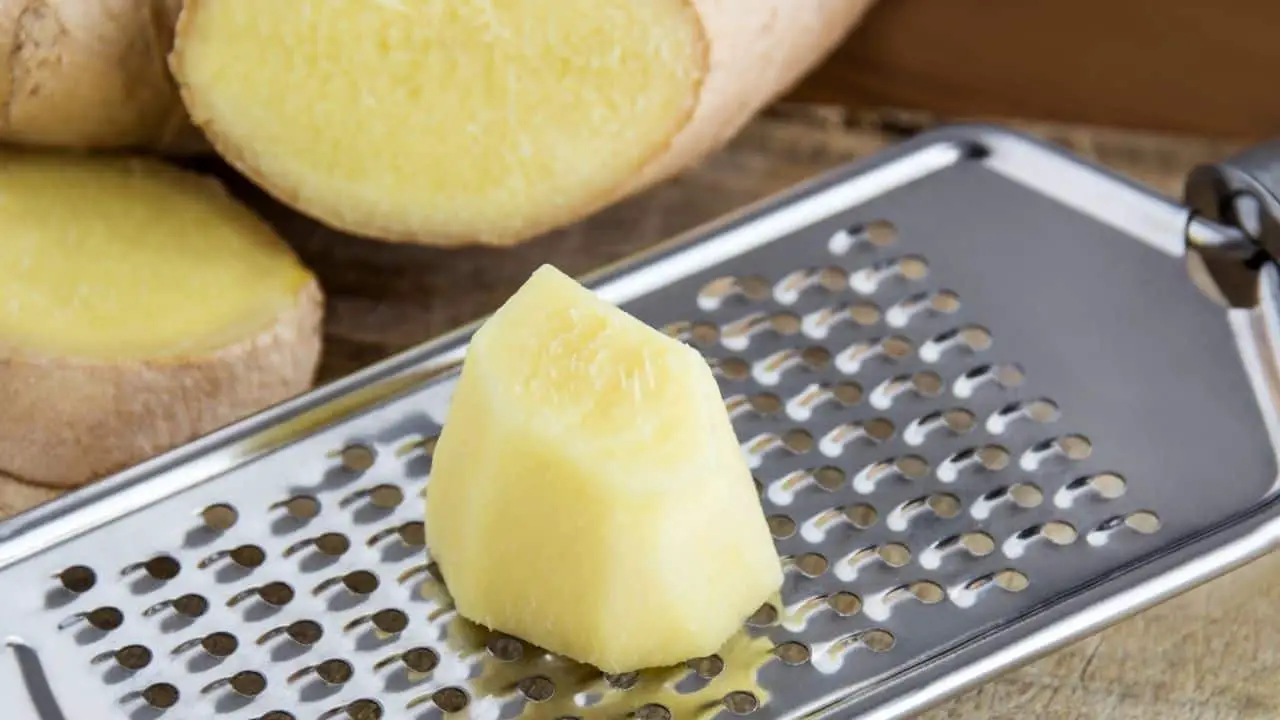Aromatic, zesty, and pungent, ginger is excellent for adding flavor and spice to your foods and drinks. While ginger is great for cooking, it also offers impressive nutritional benefits, and its root has been used since ancient times to soothe various ailments and conditions.
Ginger root excretes an oleoresin that contains up to 14 bioactive compounds with remarkable anti-inflammatory, antioxidant, and antibacterial properties. The main bioactive compound in ginger – [6]-gingerol – is the source of the majority of these benefits below. [1]

If you are not regularly eating ginger yet, here are six ways you can take this spice to reap the most benefits.
6 Ways To Eat Ginger
1. Eating Fresh Root
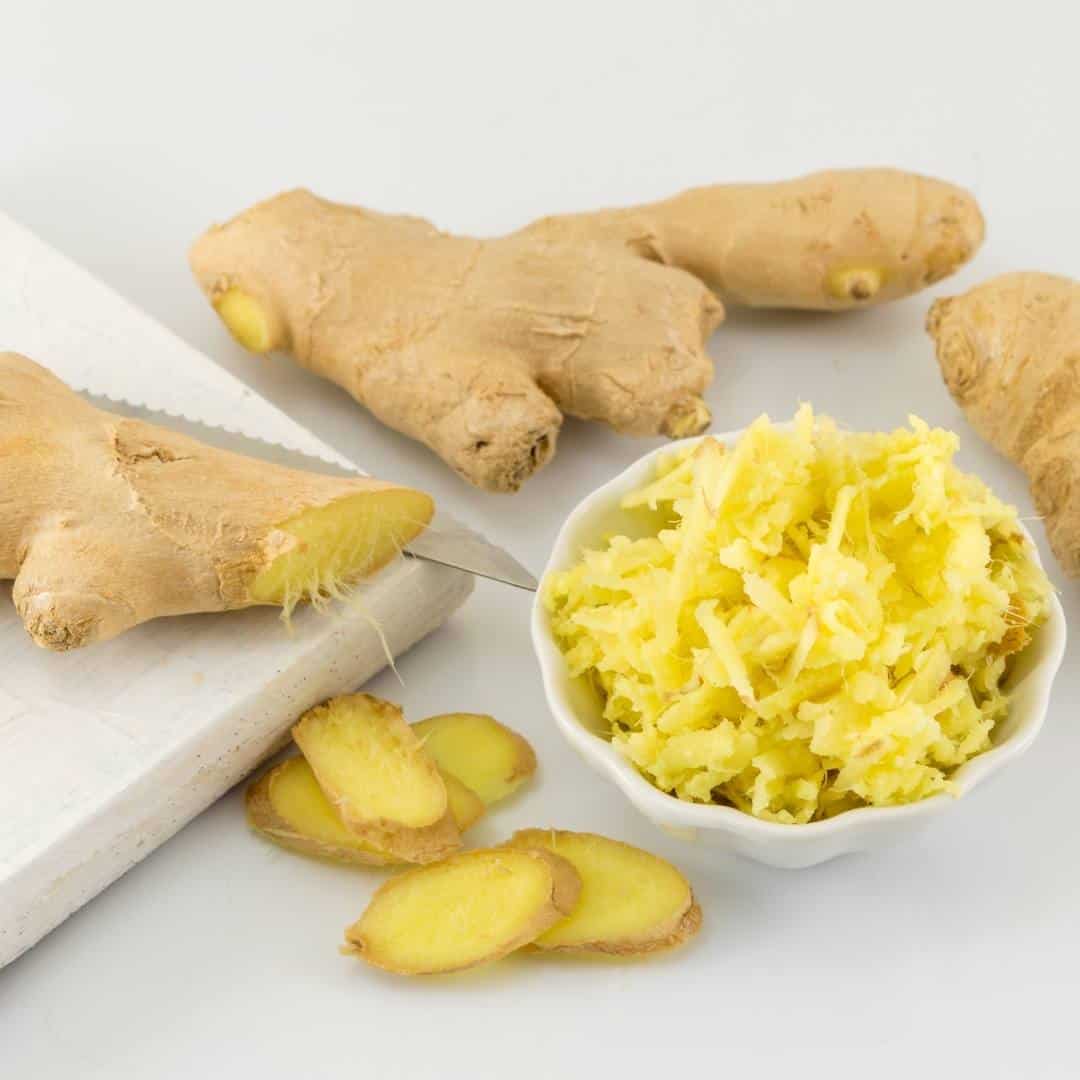
Adding freshly grated, chopped, or sliced ginger root to your food and drink is one of the most common and best ways to add this peppery and sweet root to your daily diet.
Best ways to eat fresh ginger root:
- Chew on raw fresh ginger
- Add it to a smoothie and shakes
- Add it to your recipes
- Grate or chop it and mix it with honey
- Make ginger juice or wellness shots
- Make tea
Read Also: How To Make Wellness Shots? (7 Easy, Yet Powerful DIY Wellness Shot Recipes)
How Much Fresh Ginger Should You Be Eating?
Raw ginger contains the highest amount of available nutrients. The greatest benefit of fresh ginger is seen from consuming 1-3 grams per day. However, the amount of ginger you should eat varies depending on the reason you’re eating it. [2]
As for eating too much of it, ginger is quite safe to eat as a part of a balanced diet.
Adding it to your food is not likely to cause you to eat it in excessive amounts to trigger any side effects. Luckily, ginger is both potent in nutrient content and easy for your body to digest.
This makes it acceptable to consume alone and on an empty stomach. Making it a great go-to in the morning and throughout the day.
How To Pick Fresh Ginger
Look for ginger root that looks fresh and has thin, unwrinkled skin. Thick and hard skin is a sign that the root is dried out and old. You should be able to scratch the skin with your nails easily.
Do You Need To Peel Ginger?
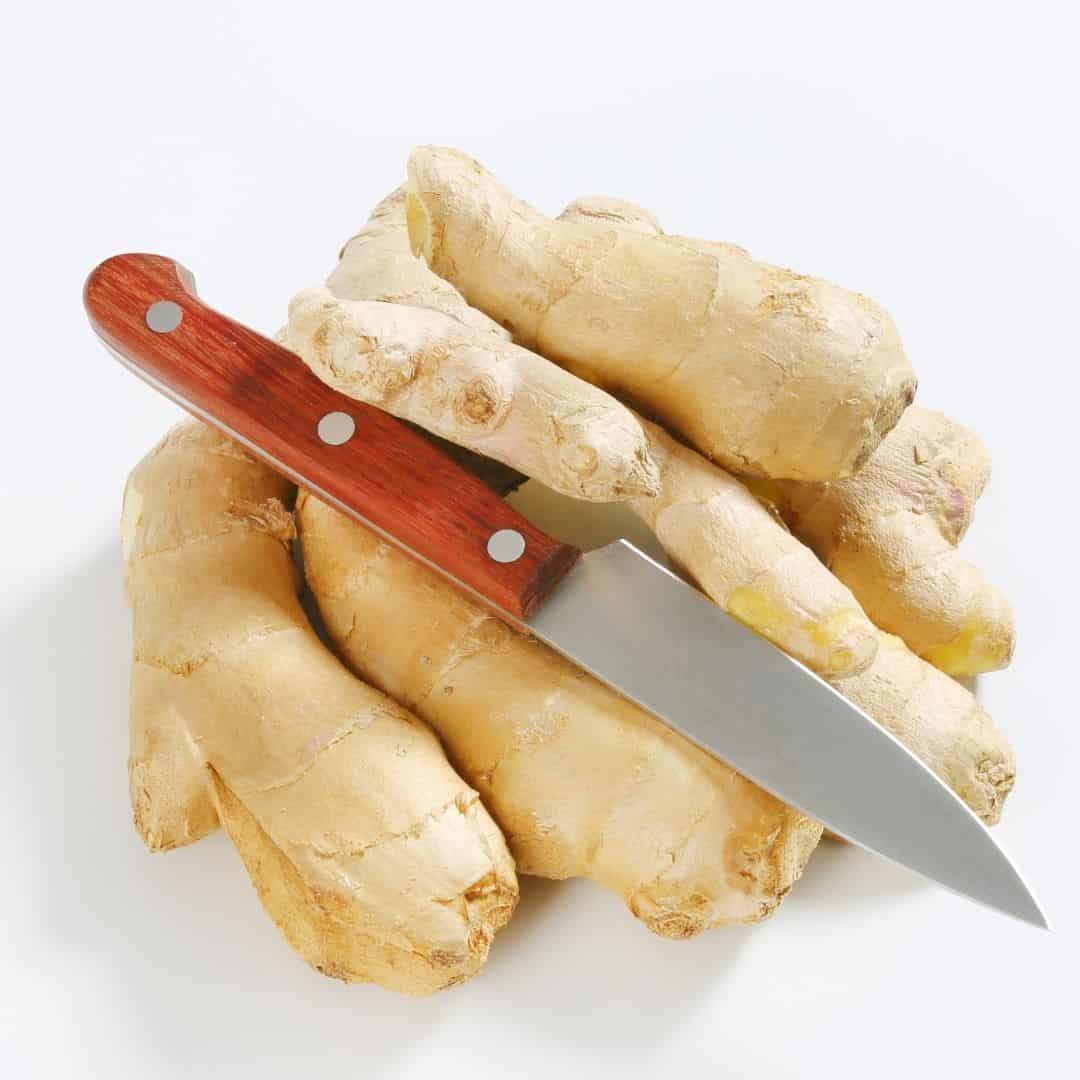
Fresh ginger root does not need to be peeled; many essential oils and nutrients are right under the peel. A good wash and scrubbing with the brush will do. However, ginger peel thickens over time and becomes bitter. In that case, scrape off the peel with the edge of the spoon.
How Long Will Fresh Ginger Last?
Vitamins and minerals in fresh produce degrade the longer it’s stored. If the fresh root is stored at room temperature, then eat it within a week. If kept in the fridge, then eat it within a month. To freeze it, grate it first and keep it for about six months.
Does Cooking Ginger Destroy Nutrients?
Although Research shows that gingerol is not affected by heat, ginger can still lose some water-soluble micronutrients during the cooking process, so it’s best to consume it fresh or slightly cooked.
When boiling ginger, some nutrients will leach into the cooking water. That’s fine if you consume the water, but it is a problem if you throw the water away.
2. Ingesting Dried And Powdered Root
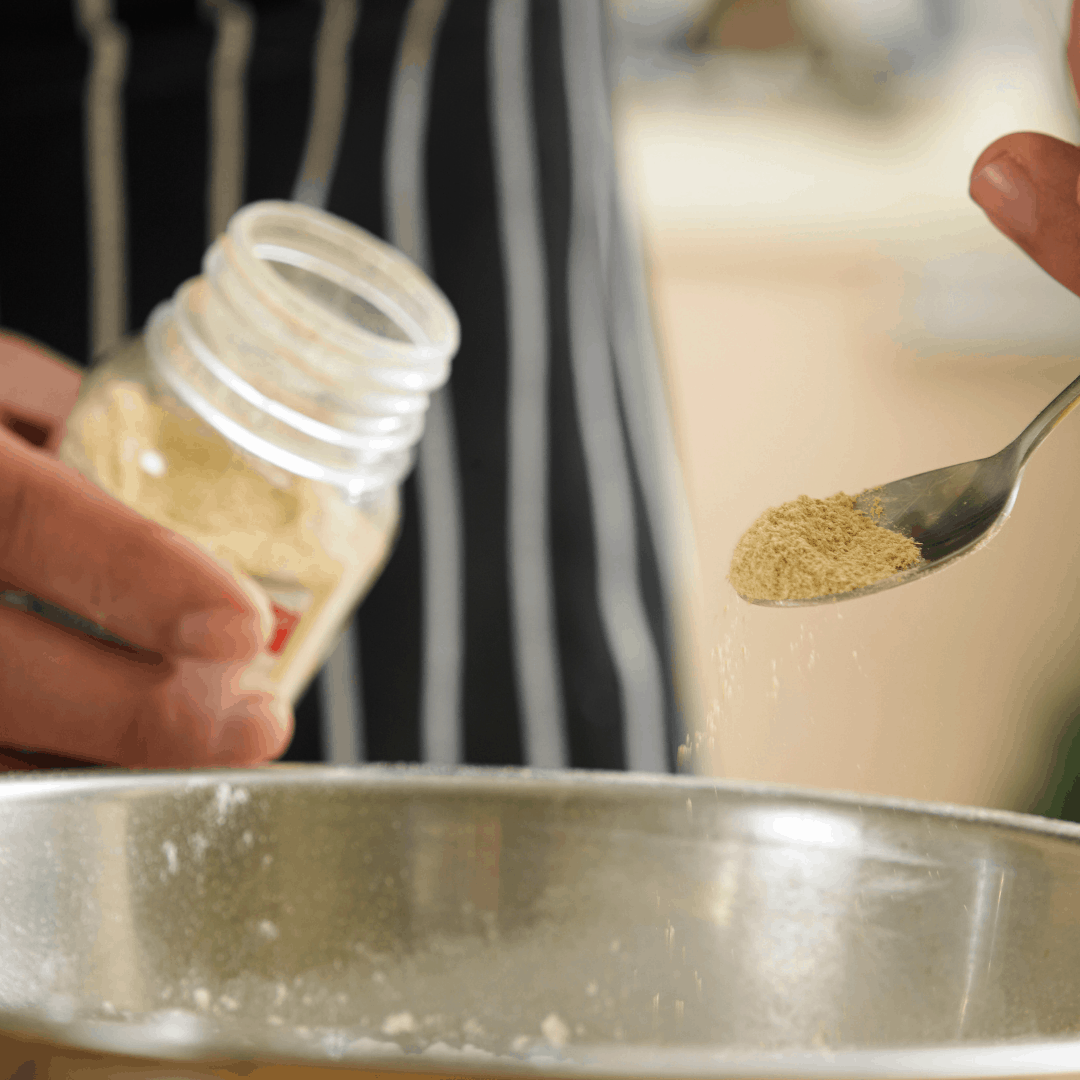
Dried and powdered ginger is another excellent and more convenient way to consume this spice. Although the drying and processing do cause some changes, a powdered version can offer almost as much benefit to your health as fresh ginger root.
Once dehydrated, ginger can be ground into a fine powder. This powder is then used in cooking, smoothies, and making tea but also in supplement capsules.
Additionally, powder has a longer shelf life and can be stored longer without the worry of vitamin and mineral degradation.
It is also noted that drying processes could increase the levels of shogaols, which also have some impressive benefits and could be even more potent than gingerol. [3]
Although there are currently no recommendations for taking these supplements, those who consume 1-3 grams of ginger powder for 3-12 weeks have reported seeing the most benefits.
3. Drinking Ginger Tea
Ginger tea is probably most well-known for its potential to help with nausea, and in particular, for helping to ease digestive issues. This warm and peppery tea can be made of fresh or dried ginger root. For an added benefit, pair it with green tea leaves. Green tea, like ginger, is high in antioxidants, phytonutrients, and anti-inflammatory aids.
How To Make Ginger Tea

Here is how to make it:
- For one average size cup of tea, use half a thumb of fresh ginger root.
- Slice your fresh root into very fine slices. You don’t have to peel it but wash it well before slicing.
- Gently simmer the slices in one cup of water for about 5-10 minutes. (You can add a cinnamon stick for extra flavor and benefits)
- Now the tea is ready to drink. You can add a touch of honey and lemon for the taste.
The above recipe is classic and probably one of the easiest ginger tea recipes there is. However, I recently discovered an even better way to consume more of this spicy root and make tea in the process.
Watch the video below on how I use the leftover pulp from my wellness shots to make a soothing and refreshing tea.
This tea is hot, tangy, and so full of flavor from lemon, apple, and turmeric. This tea has a lovely color and offers additional anti-inflammatory benefits from turmeric.
4. Drinking Ginger Kombucha
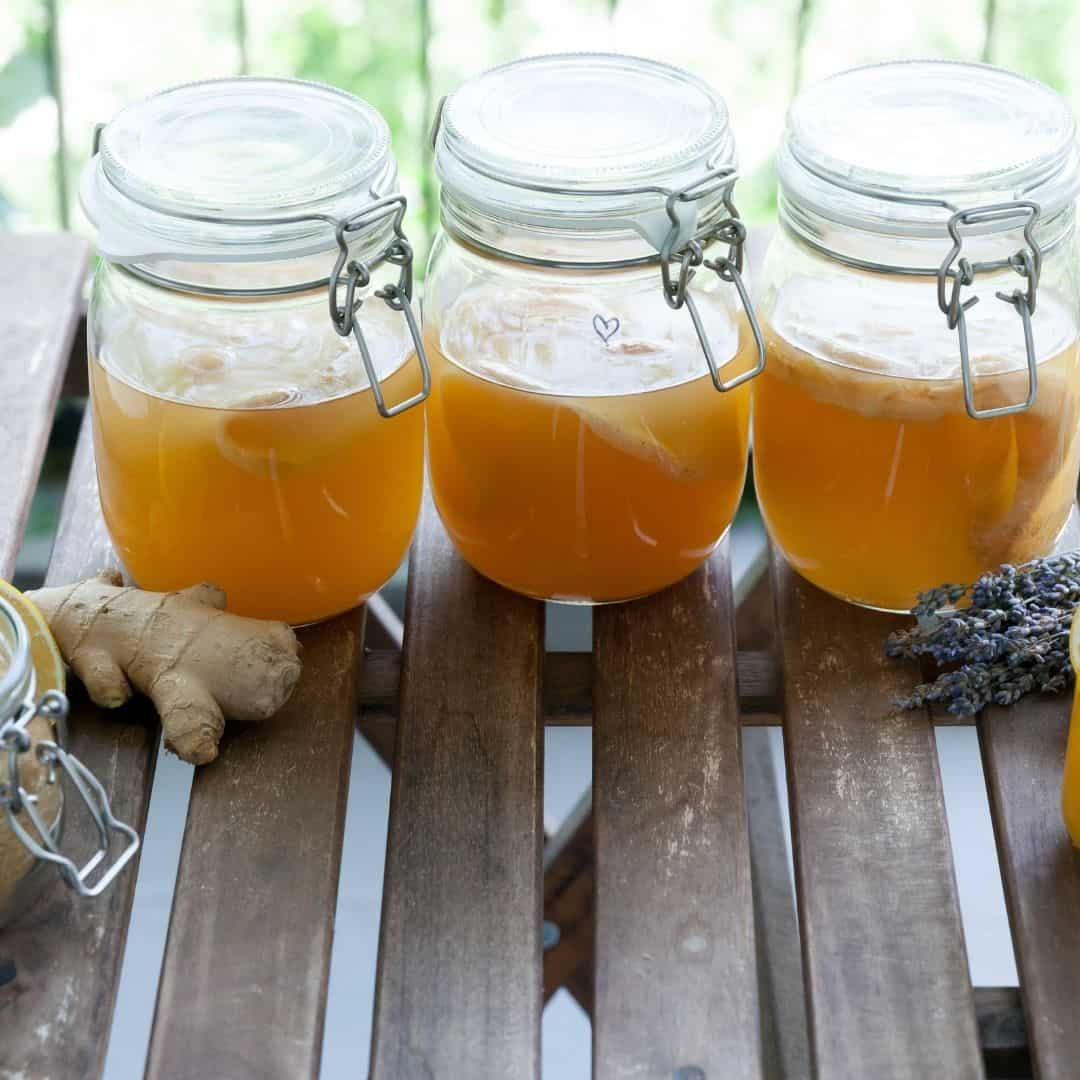
Ginger and Kombucha are a powerful duo of gargantuan proportions. Kombucha is slightly tangy, delightfully tart, and fizzy; ginger brings a slightly peppery, warm, and sweet, with an intense side-kick to the punch.
Why Is Ginger Kombucha So Good For You?
Kombucha is a fermented tea that contains active live cultures of beneficial probiotics. Ginger juice, when added to kombucha tea, provides the additional beneficial compound gingerol.
Improvements in gut bacteria can be seen with 1-2 8 oz serving of ginger kombucha per day.
Unlike tea, kombucha requires some time and effort to make it. Fermentation time can take anywhere between 7 to 10 days, but it is well worth the wait. Check out the detailed instructions for the recipe and all the ingredients needed here: thekitchn.com
Read Also: Apple Cider Vinegar vs. Kombucha: Which One Should You Drink?
5. Taking Ginger And Apple Cider Vinegar

If you really can’t be bothered to go through the brewing process of making the kombucha drink above, then don’t worry. The next best thing would be combining ginger with apple cider vinegar.
Like kombucha, this drink creates a powerful boost of antioxidants and nutrients that aid in digestion, ease nausea and bloating, and could even help with weight loss.
Here is how to make it:
Ingredients:1 1/2 cups hot water 1 tbsp of lemon juice2-3 tsp of raw, organic, unfiltered apple cider vinegar1 tbsp of manuka honey1 tsp fresh ginger juice or 1/2 tsp powdered ginger
Instructions:
- Combine ginger juice or powder with lemon juice and honey and mix until well incorporated.
- Serve it hot and drink it like tea.
Although apple cider vinegar is associated with an incredibly strong and unpleasant taste, this mixture is pleasantly sweet and spicy.
6. Ingesting Extracts And Oil
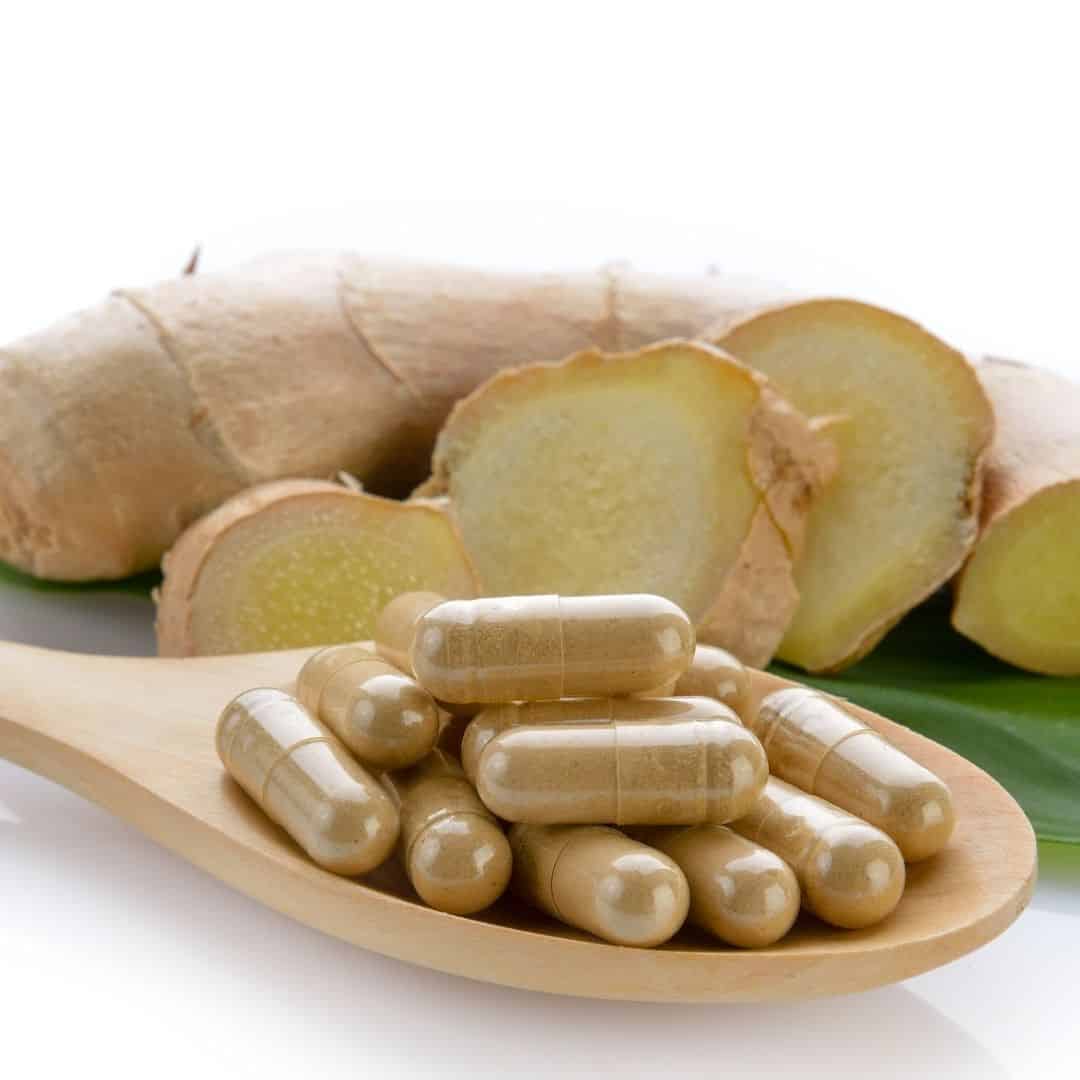
Ginger extracts are highly concentrated herbal supplement that comes in liquid, tablet, or powdered form. All the active compounds, vitamins, and minerals are industrially extracted directly from the ginger root.
Liquid extracts can be easily added to water to ease nausea, migraines, digestive upset, and arthritis pain. Take the extract as a dietary supplement, one capsule 1 to 3 times daily or as needed, preferably with food. Always check the recommended dosage on your product label.
When taking a liquid extract, shake well before using. Add about 1 ml (approximately 25 drops) to 2 oz of water or juice and take 1-3 times per day between meals.
As with any dietary supplement, always read the product label and make sure you consult your healthcare professional before use.
Ginger oils are also available but should never be consumed unless they are food-grade. However, they can be applied topically to benefit the hair and skin.
What Else?
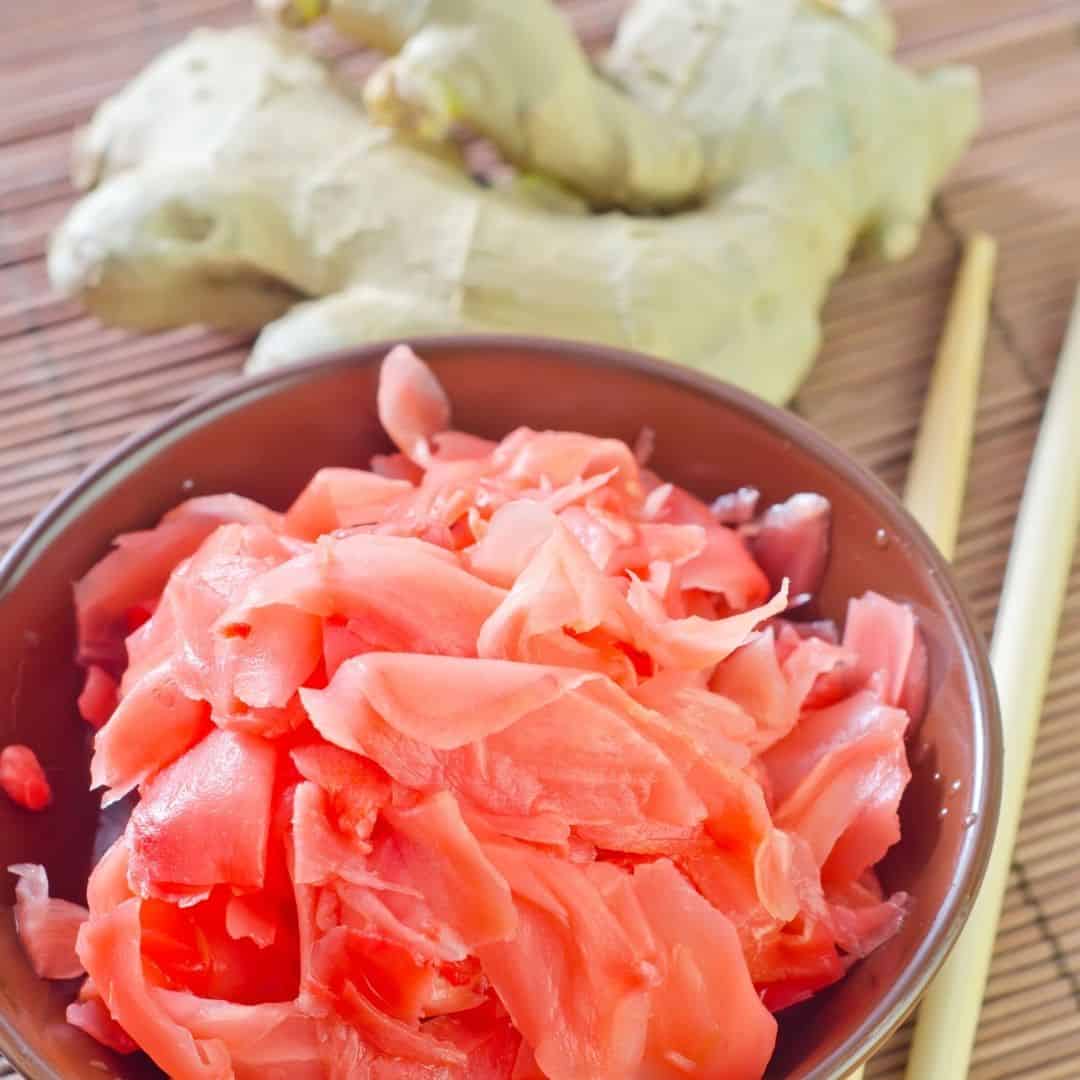
Now, there are a few other ways you can eat this spicy root, like Japanese pickled ginger (also known as Gari, pink sushi ginger) and crystallized ginger. I have left out these two options because they are often loaded with sugar, salt, or preservatives. But that said, there are some delicious crystallized ginger recipes you can try out.
I suppose you can make healthier versions at home, but whether pickling or crystalizing, the process still requires quite a lot of salt or sugar, so if you are after the most benefits, I recommend sticking with some of the other options above.
Are There Any Side Effects?
Ginger is considered relatively safe to eat when eaten whole, ground, cooked, or raw and as a part of a balanced diet. However, some people can have a few mild side effects, including diarrhea, heartburn, or general stomach discomfort.
If you are new to eating ginger or have any concerns, then consult your healthcare provider before adding it to your diet.
No juicer is needed! Here is an easy way to make your own tangy and spicy ginger, lemon, cayenne, and turmeric shots for a tasty, powerful boost for a day. (Includes bioavailability enhancer).
Read Also: Why You Should Take Turmeric With Black Pepper Extract?
